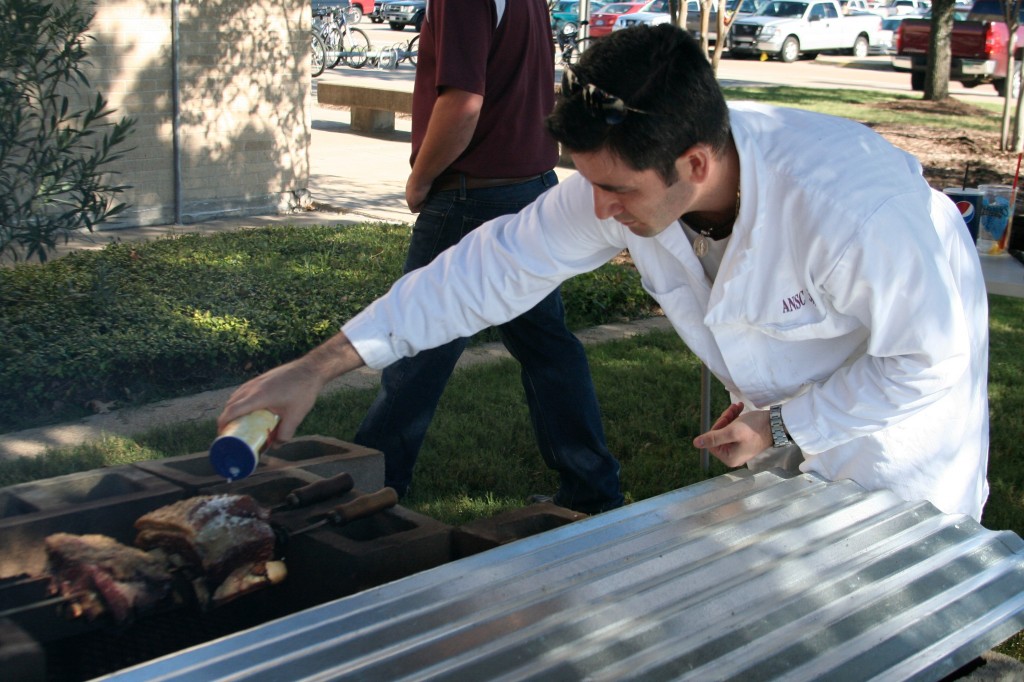 Ever wonder why foods brown during cooking? Ever wonder why the smoke ring appears on barbecue? Ever wonder why some cuts require higher internal temperatures before they are tender? Welcome to the science of barbecuing.
Ever wonder why foods brown during cooking? Ever wonder why the smoke ring appears on barbecue? Ever wonder why some cuts require higher internal temperatures before they are tender? Welcome to the science of barbecuing.
The Maillard Reaction is responsible for browning. This is where the amino acids in foods react with reducing sugars to form the characteristic brown cooked color of foods.
The smoke ring involves the chemistry of nitric oxide from burning wood combining with myoglobin in meat to form nitrosyl hemochromogen, the same pigment found in cured meats. This is why you do not see this phenomenon in meats cooked in the oven since there is no source of nitric oxide in this environment.
 Briskets and pork butts are two of the most popular barbecue cuts, and both of them have a high percentage of connective tissue containing collagen. Collagen is converted to gelatin when heated (this is how Jello® is manufactured), and it requires a higher internal temperature (ranges from 185 to 195°F) to achieve this conversion. Although the muscle fiber component of tenderness gets tougher as internal temperatures go up, the connective tissue component of tenderness becomes more tender. Fall-apart barbecue such as pulled pork is achieved because the connective tissue has become soluble with cooking. Failure to reach this endpoint will result in tough barbecue.
Briskets and pork butts are two of the most popular barbecue cuts, and both of them have a high percentage of connective tissue containing collagen. Collagen is converted to gelatin when heated (this is how Jello® is manufactured), and it requires a higher internal temperature (ranges from 185 to 195°F) to achieve this conversion. Although the muscle fiber component of tenderness gets tougher as internal temperatures go up, the connective tissue component of tenderness becomes more tender. Fall-apart barbecue such as pulled pork is achieved because the connective tissue has become soluble with cooking. Failure to reach this endpoint will result in tough barbecue.
There are many other factors observed in barbecuing that have a scientific basis for why they occur. Why do you observe a plateau in internal temperatures near the end of cooking? The answer is evaporative cooling (see the link below for more details). There is a science to the art of barbecuing!
Learn more about the science (and art) of barbecuing.
- Maillard Reaction
- What Gives Meat Its Flavor?
- Physicist Cracks BBQ Mystery
- The Food Lab: The Importance of Resting Meat
- Letting Meat Rest After Cooking
- Food Science: Resting Meat
- What’s the Point of Resting Meat Before Cutting It?
- Smoke Ring
- The Smoke Ring Forum Index — About Smoke Rings by Dr. Joe Cordray, Iowa State University


